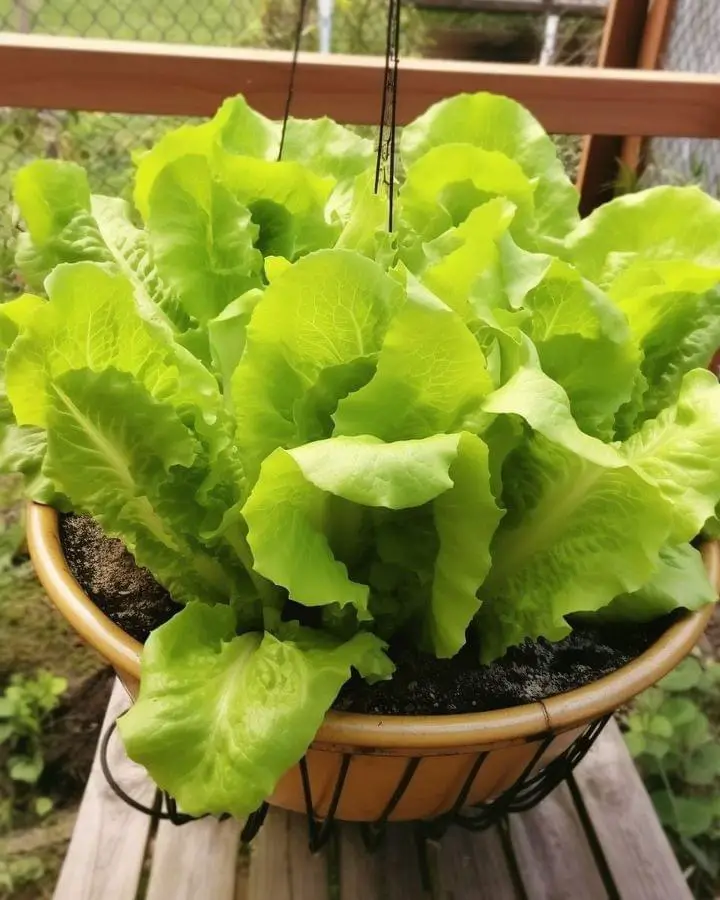Interested in savoring the fresh taste of homegrown lettuce but short on garden space? Container gardening is the answer! Grow lettuce in containers for a convenient and satisfying experience, even in tight spots. Our guide will walk you through each step, ensuring a plentiful harvest of crisp, vibrant greens.
Step 1: Container Selection
Choose a container at least 6-8 inches deep and 12-18 inches wide, made of plastic, clay, or wood with drainage holes to avoid waterlogging.
Step 2: Lettuce Variety
Pick lettuce types like loose-leaf or romaine based on your preferences and container size. Compact varieties like ‘Salad Bowl’ or ‘Lollo Rossa’ are perfect for containers.
Step 3: Soil Preparation
Prepare a potting mix of equal parts compost, peat moss, and perlite or vermiculite for well-drained, fertile soil. Fill the container, leaving an inch of space below the rim.
Step 4: Planting
Sow seeds evenly on the soil surface, cover lightly with soil, and water gently. Alternatively, use transplants from a nursery.
Step 5: Ideal Conditions
Place the container where it gets 4-6 hours of partial sunlight daily, maintaining temperatures between 45°F and 75°F (7°C to 24°C).
Step 6: Watering
Keep the soil evenly moist, avoiding waterlogging. Water at the base of plants to prevent fungal diseases and mulch with straw or compost for moisture retention.
Step 7: Fertilization
Feed lettuce with organic fertilizer every 3-4 weeks or use slow-release fertilizer, avoiding excess to prevent bitterness.
Step 8: Pest and Disease Control
Regularly check for pests like aphids and control them with organic methods. Rotate crops and ensure good airflow to prevent diseases.
Step 9: Harvesting
Start harvesting outer leaves after 4-6 weeks, leaving inner leaves to grow. Use scissors or a knife to cut leaves just above the soil, harvesting until the plant bolts or turns bitter.
FAQs (Frequently Asked Questions)
-
Can I grow lettuce indoors?
Yes, lettuce can be grown indoors as long as it receives sufficient sunlight or artificial light, and the temperature remains within the suitable range of 45°F to 75°F (7°C to 24°C). -
How often should I water my container lettuce?
Aim to keep the soil evenly moist, watering when the top inch of soil feels dry. Avoid overwatering to prevent root rot and underwatering, which can lead to wilted plants. -
What are common pests and diseases that affect lettuce?
Common pests include aphids, slugs, and snails, while diseases like powdery mildew and damping-off can also occur. Regular inspection and proper maintenance can help prevent these issues. -
Can I reuse the potting mix for lettuce?
It’s generally recommended to refresh the potting mix for each new planting to ensure adequate nutrient availability and prevent the buildup of pests and diseases. -
How long does it take for lettuce to mature?
Depending on the variety and growing conditions, lettuce can be ready for harvest in as little as 4-6 weeks after planting. Loose-leaf varieties typically mature faster than head lettuce types. -
Can I grow lettuce year-round in containers?
With proper care and attention to temperature and sunlight requirements, lettuce can be grown year-round in containers, especially indoors or in mild climates. However, extreme heat or cold may affect growth. -
How do I prevent lettuce from bolting?
To prevent lettuce from bolting (producing flowers and going to seed prematurely), provide consistent moisture, shade during hot weather, and harvest promptly to encourage continued leaf production. -
Is it necessary to fertilize container-grown lettuce?
While lettuce doesn’t require heavy fertilization, applying a balanced organic fertilizer every few weeks or using slow-release fertilizer can promote healthy growth and leaf production, especially in nutrient-depleted potting mixes.

